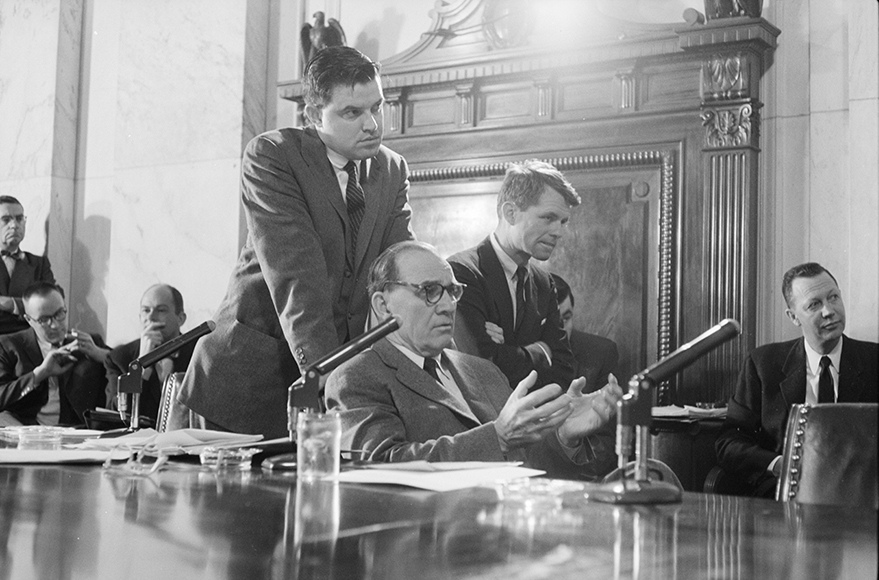By: Alan Yatvin
Today, in a unanimous opinion authored by Justice Kagan, the United States Supreme Court ruled in Barnes v. Felix, that assessment of the reasonableness of a police officer’s actions in a fatal shooting must take into account the events leading up to the shooting, not just the moment the gun was fired, stating:
The moment-of-threat rule applied in the courts below prevents that sort of attention to context, and thus conflicts with this Court’s instruction to analyze the totality of the circumstances. Recall that the District Court and Fifth Circuit limited their view to the two seconds before the shooting, after Felix had stepped onto the doorsill of Barnes’s car. See supra, at 3–4. Those courts believed that, under Fifth Circuit precedent, they could not take into account anything preceding that final moment. See 532 F. Supp. 3d, at 471 (excluding analysis of “what had transpired up until the shooting itself”); 91 F. 4th, at 397 (agreeing that “actions leading up to the shooting are not relevant”). So, for example, they could not consider the reasons for the stop or the earlier conduct of, and interactions between, the suspect and officer. And because of that limit, they could not address whether the final two seconds of the encounter would look different if set within a longer timeframe.
Reading the opinion this morning sent me back in time 26 years.
On March 23, 1999, I appeared before the United States Court of Appeals for the Third Circuit to argue an appeal on behalf of the estate of Robert Abraham. It was the most unusual of any appellate argument I have made or seen.
Robert Abraham and a friend were intoxicated when they entered Macy’s in the Cherry Hill Mall and shoplifted some clothes – captured on security cameras. They exited Macy’s into the parking lot, where mall and store security converged upon them as they approached their car. One of the pursuers was Kimberly Raso, an off-duty Cherry Hill Police Officer, moonlighting in her police uniform under an agreement between the mall and the Cherry Hill PD. Abraham entered the car and started to back-up to drive away. As he did so, Raso fired a bullet through the driver’s side window, striking Abraham in the side, entering his heart and killing him. Raso claimed that she and other officers were in danger from the car, and that Abraham nearly ran her over as she was hemmed in between his car and the cars parked right next to it. The district court granted summary judgment and I appealed.
As I stood to argue to the Third Circuit panel, I stated that summary judgment should be reversed on two grounds: the district court’s unreasonably narrow application of the facts to be considered in determining whether Raso’s actions were reasonable – the so-called moment of threat as opposed to the totality of circumstances – and whether the district court ignored disputed material facts in granting summary judgment. Late Chief Edward R. Becker immediately demanded to know what facts I was relying upon. I responded that Raso’s version was directly contradicted by the store security video. Judge Becker correctly pointed out that the security video switched away about 8 seconds before the shooting, not capturing the car backing out of the space or Raso pulling her gun and firing, only returning as the driverless car rolled up the aisle away from Raso and fellow security officers. So, Judge Becker asserted, the video was no help to me. Not so, I said while gesturing with the VHS cassette in my hand, the video showed that there were no other cars in the spaces beside Abraham contradicting Raso’s version of the events.
Irritated, Judge Becker then asked why I hadn’t made arrangements to have equipment available for the panel to view the video. I tried, I responded, but the Clerk had denied my request. Judge Becker then announced that the court would stand in recess while a VCR and television monitor were set up.
15 minutes later we reconvened in the well of the courtroom, where I, the three be-robed judges who had come down off the bench, the multiple attorneys for the various defendants, and my client Vanessa Abraham, Robert’s mother, all stood shoulder to shoulder in front of the TV. Judge Becker handed me the remote and told me to go ahead and make my case. For the next 10 minutes I took the panel through the video, replaying relevant parts, using super slo-mo, and narrating significant events. Occasionally interrupted by Judge Becker asking me to replay segments or explain my version of what we were seeing and the relevancy.
Four months later the Court issued a unanimous opinion authored by Judge Robert Cowen, reversing the grant of summary judgment, declaring “‘Totality’ is an encompassing word,” and implies reasonableness “should be sensitive to all of the factors bearing on the officer’s use of force.” The decision asked: “How is the reasonableness of a bullet striking someone to be assessed if not by examining preceding events?” Abraham v. Raso, 183 F.3d 279, 291 (3d Cir. 1999).
The Abraham Court also went to that videotape in pointing out the disputed material facts preventing summary judgment:
We begin by noting that the pursuit of Abraham in the parking lot appears to have been measured, not frantic. When the mall’s surveillance video showed the actors out in the parking lot, they were all walking. As Avilez headed up aisle 68 just a short distance from where Abraham’s car was located, he took his time, talking into a radio and maneuvering in between two rows of cars parked head to rear against each other. How frenzied this initial pursuit was does not necessarily show anything about Abraham’s conduct once in his car, but it does at least suggest that Abraham’s actions were less desperate, giving the officers more time for considered action and less reason to fear his acts.
Much more significantly, when Abraham began backing, it is far from clear just how close Redding, Avilez, and Raso were and consequently whether they were put in jeopardy by the backing. The estate maintains, with considerable plausibility, that the video shows there was one open parking space next to Abraham’s car on its passenger side and two open spaces to the driver’s side. Testimony also suggests Avilez and Redding were standing near the front end of the car, leaving them much less exposed as Abraham backed away from them. Raso testified that she was approaching the car from the rear, leaving doubt about how close she was and whether Abraham really was at risk of hitting her as he backed. She did say in her deposition taken on July 30, 1997, she had to “jump” out of the way when the car backed up. But in her statement taken just two weeks after the shooting, her description was less dramatic: “as the driver accelerated in reverse․ I had to move back away from the vehicle so he didn’t hit me then.” Raso App. at 198. Raso also suggested that a car was next to Abraham’s, making the space tight. The video tape evidence suggests otherwise. A reasonable jury could decide she embellished.
How fast Abraham drove in reverse is also not beyond rational dispute. The District Court stated that Abraham “rammed” into a parked car, and it is true that witnesses testified that Abraham accelerated quickly out of his spot and collided forcefully with a Mustang parked behind him. But the photographs we have in the record of both Abraham’s car and the Mustang do not show any damage to either car beyond smudges of paint on their bumpers. Based on that physical evidence, a reasonable jury could reject the witnesses’ recollections as inaccurate. A more fundamental point is that given the doubts about whether Abraham was close to hitting someone when he backed, the fact that he collided forcefully with a parked car (if it is a fact) does not by itself show that Abraham posed a significant threat of death or serious physical injury to other people.
In sum, the undisputed facts are that Abraham had stolen some clothing, resisted arrest, hit or bumped into a car, and was reasonably believed to be intoxicated. Given these facts, a jury could quite reasonably conclude that Abraham did not pose a risk of death or serious bodily injury to others and that Raso could not reasonably believe that he did.
Raso was not mentioned by the Court in the Barnes decision, but it was cited by Barnes, the United States in support of Barnes and by other amici. It took several decades, but a 26-year-old ruling forged in the well of a Third Circuit courtroom is now the law of the land.
P.S. The case settled on remand.





